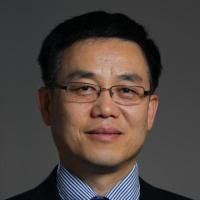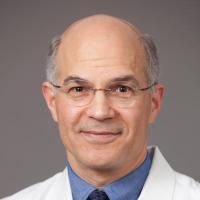Kruppel-like factor 15 is critical for vascular inflammation.
Date
2013-10
Journal Title
Journal ISSN
Volume Title
Repository Usage Stats
views
downloads
Citation Stats
Abstract
Activation of cells intrinsic to the vessel wall is central to the initiation and progression of vascular inflammation. As the dominant cellular constituent of the vessel wall, vascular smooth muscle cells (VSMCs) and their functions are critical determinants of vascular disease. While factors that regulate VSMC proliferation and migration have been identified, the endogenous regulators of VSMC proinflammatory activation remain incompletely defined. The Kruppel-like family of transcription factors (KLFs) are important regulators of inflammation. In this study, we identified Kruppel-like factor 15 (KLF15) as an essential regulator of VSMC proinflammatory activation. KLF15 levels were markedly reduced in human atherosclerotic tissues. Mice with systemic and smooth muscle-specific deficiency of KLF15 exhibited an aggressive inflammatory vasculopathy in two distinct models of vascular disease: orthotopic carotid artery transplantation and diet-induced atherosclerosis. We demonstrated that KLF15 alters the acetylation status and activity of the proinflammatory factor NF-κB through direct interaction with the histone acetyltransferase p300. These studies identify a previously unrecognized KLF15-dependent pathway that regulates VSMC proinflammatory activation.
Type
Department
Description
Provenance
Subjects
Citation
Permalink
Published Version (Please cite this version)
Publication Info
Lu, Yuan, Lisheng Zhang, Xudong Liao, Panjamaporn Sangwung, Domenick A Prosdocimo, Guangjin Zhou, Alexander R Votruba, Leigh Brian, et al. (2013). Kruppel-like factor 15 is critical for vascular inflammation. The Journal of clinical investigation, 123(10). pp. 4232–4241. 10.1172/jci68552 Retrieved from https://hdl.handle.net/10161/31547.
This is constructed from limited available data and may be imprecise. To cite this article, please review & use the official citation provided by the journal.
Collections
Scholars@Duke

Lisheng Zhang
My research efforts involves studying the pathogenesis of vein graft neointimal hyperplasia and atherosclerosis.
The greatest amount of my time in the past years has been devoted to developing and characterizing our interposition vein graft model in mice. This model allows us to use IVC to carotid artery transplants between congenic mice. These transplants allow us to ask the questions about which gene products contribute to the pathogenesis of vein graft disease. In addition, I have used carotid artery to carotid artery transplants to study the role of TNF receptors in atherosclerosis. For these studies, we have used apolipoprotein E-deficient mice as graft recipients.
By using mouse vein graft model we demonstrate that most of the neointimal cells in vein grafts originate from cellular pools outside of the vein graft at the time of its implantation. The importance of this work relates to our persistent inability to treat vein graft disease in human beings. The second work demonstrates that expression of the tumor necrosis factor receptor-1, even in just in the vein graft cells themselves, contributes to the pathogenesis of vein graft neointimal hyperplasia. In this project, I surgically created chimeric mice to demonstrate molecular mechanisms by which the tumor necrosis factor receptor-1 aggravates neointimal hyperplasia, a process that is believed to lay the foundation for accelerated atherosclerosis in vein grafts.
I have also adapted my vein graft procedure in mice to ask questions about the arterial wall’s role in atherosclerosis. This atherosclerosis model involves making carotid interposition grafts not with veins, but with the carotid artery of congenic mice, and placing them into the carotid artery of spontaneously atherogenic mice that are deficient in apolipoprotein E.
I plan to continue our studies related to the role of inflammatory cytokine receptors in neointimal hyperplasia and atherosclerosis. In addition, I envision extending this work with the surgical models I have created in mice.

Neil J. Freedman
Our work focuses on atherosclerosis-related signal transduction and the genetic bases of atherosclerosis and vein graft failure, both in vitro and in vivo. We investigate the regulation of receptor protein tyrosine kinases by G protein-coupled receptor kinases (GRKs), and the role of GRKs and β-arrestins in atherosclerosis; molecular mechanisms of atherogenesis associated with the dual Rho-GEF kalirin, the F-actin-binding protein Drebrin, and small nucleolar RNAs (snoRNAs) of the Rpl13a locus. For in vivo modeling of atherosclerosis and neointimal hyperplasia, we use mouse carotid artery bypass grafting with either veins or arteries from gene-deleted or congenic wild type mice, as well as aortic atherosclerosis studies and bone marrow transplantation. To study receptor phosphorylation, signal transduction, and intracellular trafficking, we employ primary smooth muscle cells, endothelial cells, and macrophages derived from knockout mice, as well as cells treated with RNA interference.
Key Words: atherosclerosis, G protein-coupled receptor kinases, arrestins, desensitization, phosphorylation, receptor protein tyrosine kinases, smooth muscle cells, neointimal hyperplasia, Rho-GEF, Drebrin, snoRNAs.
Unless otherwise indicated, scholarly articles published by Duke faculty members are made available here with a CC-BY-NC (Creative Commons Attribution Non-Commercial) license, as enabled by the Duke Open Access Policy. If you wish to use the materials in ways not already permitted under CC-BY-NC, please consult the copyright owner. Other materials are made available here through the author’s grant of a non-exclusive license to make their work openly accessible.
